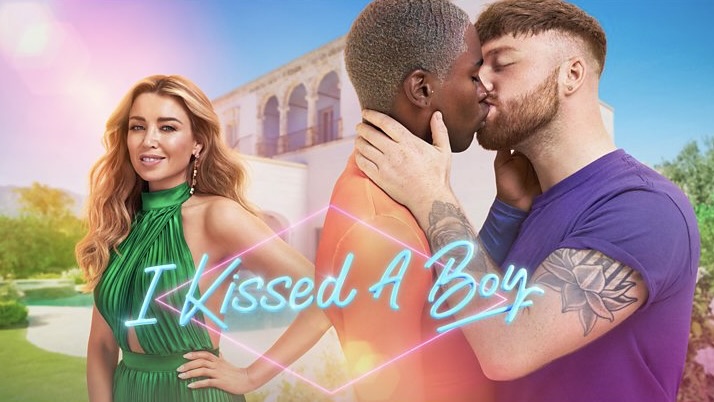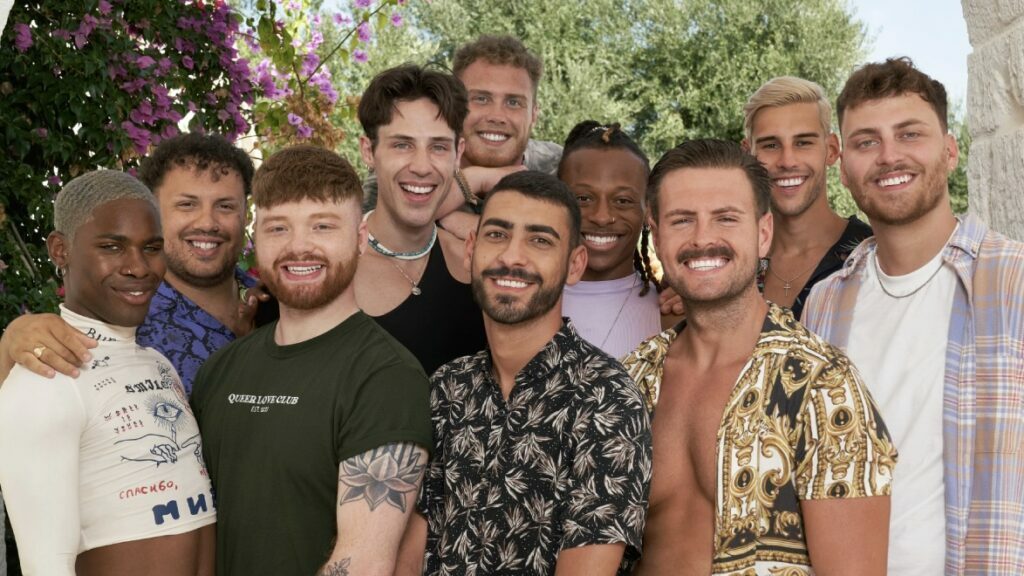I Kissed A Boy review: This queer dating show reignites reality TV
The new BBC Three show is a welcome shake-up.

If you are in the market for reality TV there’s no shortage of options. With an endless array of dating shows to peruse, another dating show coming to our screeners may result in eye-rolls. However, I Kissed A Boy is different.
From the Cilla Black-hosted 1980s Blind Date to the modern-day Love Island, heterosexuality has dominated the reality dating format. Queer romance has been glaringly missing from our screens. Four decades after Blind Date, our calls have been answered.
BBC Three’s eight-part I Kissed A Boy arrives as the UK’s first gay dating show. It’s one hell of a title and also a refreshing addition to the reality dating canon. Borrowing the match-making tactics of Married at First Sight, matches are made over the pair’s compatible attributes for a partner. The tried-and-tested format is simple; the 10 singletons are paired up and share their first kiss in front of the Masseria they’ll be staying in. As the sun beats down on rural Italy, the five couples meet for the first time and lock lips. Then after the passionate kiss or little peck, they must individually decide whether or not they want to commit.
Before the couples can even settle in on their first day, a new gentleman waltzes in and leaves jaws on the floor. Everyone is now a love interest as their strongest match may not be to their taste. The drama really kicks off at the announcement of a “kiss-off,” which plays out like a Love Island fireside recoupling but with even more shocked gasps. The show is familiar with the voice of Layton Williams and Cupid appears in the form of a glowing Dannii Minogue. Even as Dannii somewhat predictably reveals “anyone left unkissed will be leaving,” there are still surprises in store.
Cupid appears in the form of a glowing Dannii Minogue
While the sun-soaked villa indicates Love Island’s shallowness, I Kissed A Boy does find nuance. One by one, as they’re introduced, it becomes clear the show relies entirely on this array of buoyant characters. Ample praise should go to the casting directors for their wonderful selection. Bringing together a variety of body types, coming out experiences and lifestyles, the show demonstrates the diversity within the LGBTQ+ community.

The strong presentation continues with how the show tackles contestant backstories. Impressively, sorrow in their lives as gay men is highlighted but not exploited. Whenever the tone dips into melancholia you can count on one of them to cheer: “Let’s go have fun and be gay!” That gay joy is central and wonderfully exuberant.
“Let’s go have fun and be gay!”
As the contestants patiently await their rom-com-worthy kiss, casual conversation about topping and bottoming plays out with the same candour as sharing their tea orders. With this playful attitude slightly cringeworthy discussions about kissing techniques are softened by the sweet, overwhelmed giggles as they break apart. These wholesome connections and infectious joy arrive at a much-needed time. A post-kiss declaration of “I’ve been baptised” seems euphoric on mainstream TV.
Furthermore, glorious outfits and impeccable needle-drop choices accompany the sense of joy that permeates the show. I Kissed A Boy is an extravaganza of rainbows, colours, glitter, and just a splash of leather. As well as music from Dua Lipa, Troye Sivan and Carly Rae Jepsen.
Additionally, I Kissed A Boy arrives as the perfect Eurovision chaser; a cheesy but totally enjoyable display of same-sex intimacy. With straight people totally absent, the new dating show demonstrates the potential of queer-focused reality TV. Netflix’s The Ultimatum: Queer Love, with all-queer female and nonbinary cast, is on the horizon and will hopefully join the new, sparkly queer canon. I Kissed A Boy may not be revolutionary. But it is worth celebrating as part of the first wave of LGBTQ+ reality TV.
